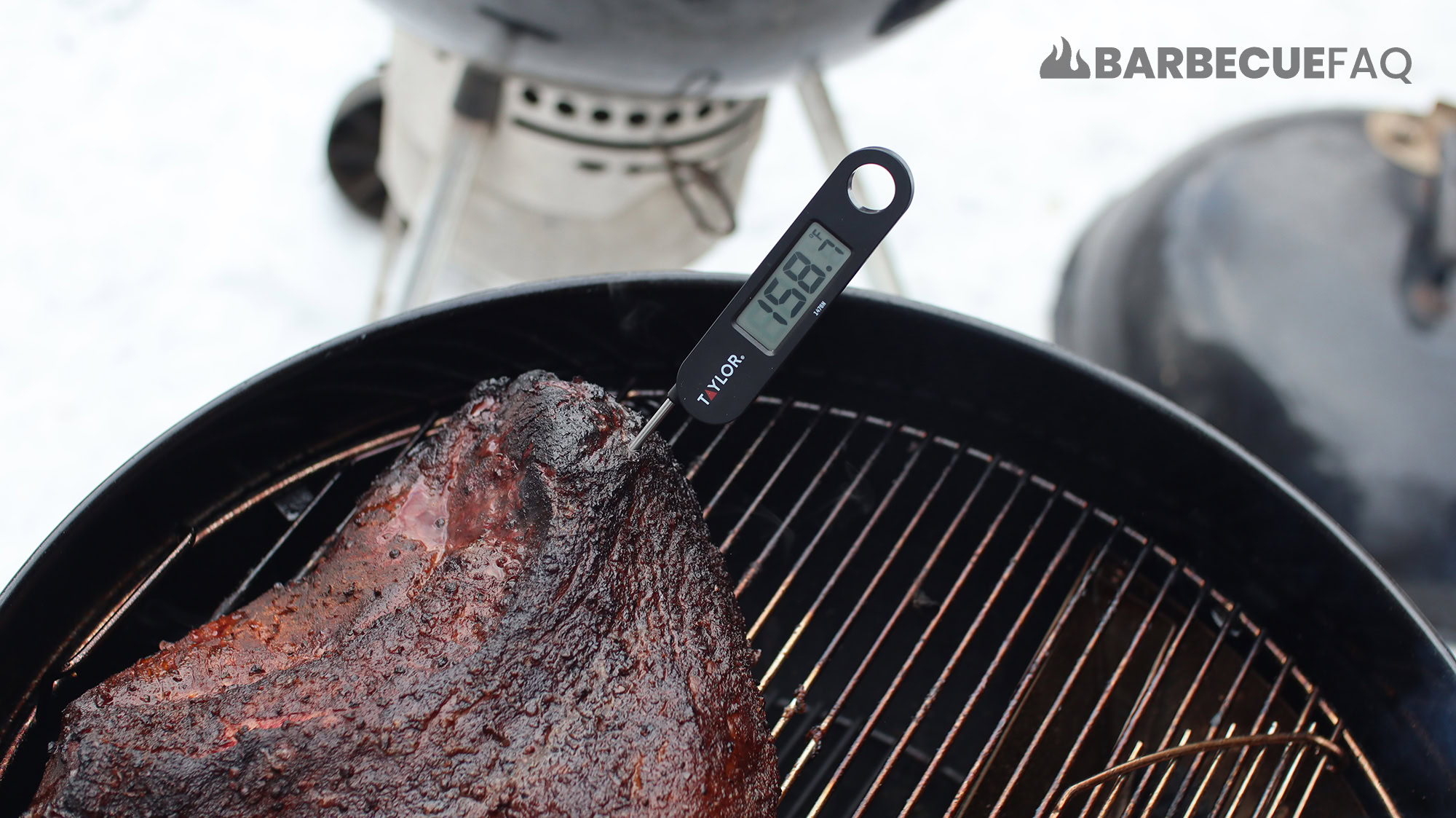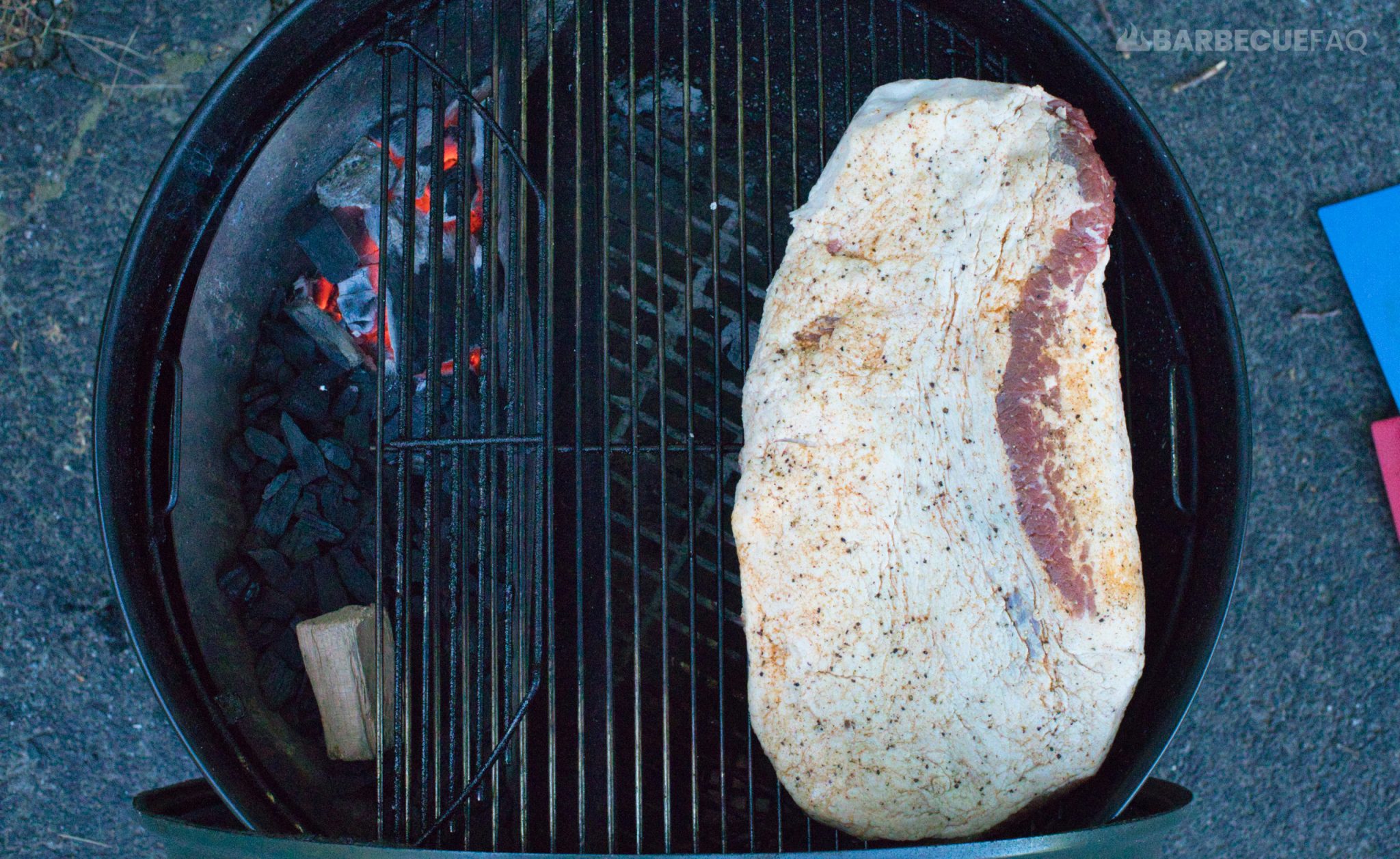Let’s face it, folks. If you’re reading this, you’re either about to embark on a low-and-slow barbecue journey or you’ve already jumped into the pitmaster pool and are looking for ways to perfect your craft. Mastering the art of when to wrap a brisket is like unlocking the secret sauce—or should I say, the secret smoke—that separates a good brisket from one that’s outta this world. Whether you’re cooking for friends, family, or just yourself, understanding the timing and technique of wrapping can make all the difference between a tender, juicy masterpiece and something that’s, well, not so great. So grab your favorite beverage, and let’s dive in.
Now, I know what you’re thinking. “Is wrapping a brisket really that important?” The short answer? Absolutely. Wrapping is more than just covering your meat—it’s about controlling moisture, temperature, and ultimately, the texture of your final product. It’s a delicate balance, and getting it right takes practice, patience, and a little bit of know-how. Lucky for you, that’s exactly what we’re here to provide.
Before we get too deep into the meat of things—pun intended—let’s break down why mastering the art of when to wrap a brisket is crucial. It’s not just about wrapping at the right time; it’s about knowing the signs, understanding your smoker, and adjusting based on the conditions. This guide will walk you through everything you need to know, from the basics to advanced tips, so you can serve up brisket that’ll have your guests talking long after the plates are cleared. Ready? Let’s get started!
- Why Dubai Porta Potty Is A Gamechanger In Urban Sanitation
- Hub4u Movie Your Ultimate Guide To Streaming Bliss
Table of Contents
- Why Wrap a Brisket?
- Understanding the Stall
- Types of Wraps for Brisket
- When to Wrap Your Brisket
- Signs It's Time to Wrap
- Wrapping Techniques
- Managing Moisture
- Temperature Control
- Common Mistakes to Avoid
- Pro Tips for Perfect Brisket
Why Wrap a Brisket?
Alright, let’s get to the heart of the matter. Wrapping a brisket isn’t just some random step in the smoking process—it’s strategic. When you wrap your brisket, you’re creating an environment where the meat can continue to cook without losing too much moisture. This is especially important during the dreaded stall phase, which we’ll talk about in a bit. By wrapping, you’re essentially giving your brisket a little extra love and attention to ensure it comes out tender, juicy, and packed with flavor.
Think of wrapping as a way to protect your brisket from drying out. Without it, the surface of the meat could become overly crispy, and the inside might end up tougher than you’d like. Plus, wrapping can help speed up the cooking process, which is always a win when you’ve been tending to your smoker for hours on end. So, yeah, wrapping is a big deal.
Benefits of Wrapping
Here’s a quick rundown of why wrapping is so beneficial:
- Pinay Flixcom Your Ultimate Streaming Destination For Pinoy Entertainment
- Lara Rose Onlyfans The Ultimate Guide To Her Rise Content And Impact
- Prevents the brisket from drying out during the stall.
- Helps retain moisture, leading to a juicier final product.
- Speeds up the cooking process by trapping heat and steam.
- Allows the connective tissues in the meat to break down more effectively.
Understanding the Stall
Alright, buckle up, because this is where things get a little science-y. The stall is a phenomenon that every pitmaster encounters when smoking brisket. Basically, as the brisket cooks, moisture evaporates from the surface, which can cause the temperature of the meat to plateau. This can last anywhere from a couple of hours to several, depending on the size of the brisket and the conditions in your smoker.
During the stall, the internal temperature of the brisket won’t rise much, even though your smoker is cranking away. This can be frustrating, but don’t panic—it’s totally normal. Wrapping your brisket during the stall helps trap the moisture, allowing the temperature to rise again and speeding up the cooking process. Without wrapping, the stall can drag on for hours, leaving you frustrated and your brisket dry.
How Long Does the Stall Last?
There’s no one-size-fits-all answer to this question, but generally, the stall can last anywhere from 2 to 6 hours. It all depends on factors like the size of the brisket, the type of smoker you’re using, and the weather conditions. The key is to monitor your brisket closely and be prepared to wrap it when the time is right.
Types of Wraps for Brisket
Now that we’ve covered why wrapping is important, let’s talk about the different types of wraps you can use. There are a few popular options, each with its own pros and cons. The choice ultimately comes down to personal preference and the results you’re aiming for. Here are the most common types of wraps:
Aluminum Foil
Aluminum foil, or as some folks call it, the “Texas Crutch,” is probably the most widely used wrapping method. It’s effective at trapping moisture and speeding up the cooking process, but some purists argue that it can lead to a loss of smoky flavor. That said, if done right, foil can still produce an incredible brisket.
Butcher Paper
Butcher paper is another popular choice, especially among competitive barbecue teams. It allows some moisture to escape while still retaining enough to keep the brisket tender. This results in a better bark (the flavorful, crispy exterior) compared to foil. Plus, butcher paper is less likely to cause the brisket to steam too much, which can dilute the smoky flavor.
Combination Wrap
Some pitmasters like to use a combination of foil and butcher paper. This method involves wrapping the brisket in foil for part of the cooking process and then switching to butcher paper later on. This approach can give you the best of both worlds—speed and flavor.
When to Wrap Your Brisket
Timing is everything when it comes to wrapping a brisket. Wrap too early, and you risk losing that beautiful bark. Wrap too late, and your brisket might dry out. So, when exactly should you wrap? The general rule of thumb is to wrap the brisket when it reaches an internal temperature of around 160°F to 170°F. This is typically when the stall kicks in, and wrapping can help you power through it.
However, keep in mind that every brisket is different. Factors like size, fat content, and smoker conditions can all influence when you should wrap. That’s why it’s important to pay attention to your brisket and make adjustments as needed.
Factors to Consider
- Size of the brisket: Larger briskets may require wrapping earlier.
- Fat content: Briskets with more fat may not need to be wrapped as early.
- Smoker conditions: High humidity or low heat can affect the timing.
Signs It's Time to Wrap
In addition to monitoring the internal temperature, there are a few visual cues that can tell you it’s time to wrap your brisket. Keep an eye out for these signs:
- The brisket feels firm to the touch, indicating that the surface has dried out.
- The bark is starting to form but hasn’t become overly crispy.
- There’s visible moisture on the surface of the brisket.
Remember, these signs can vary depending on the type of wrap you’re using. For example, if you’re using butcher paper, you might want to wait a little longer before wrapping compared to foil.
Wrapping Techniques
Once you’ve decided it’s time to wrap, it’s important to do it properly. Here’s how:
Using Aluminum Foil
Start by placing the brisket on a large sheet of heavy-duty foil. Fold the foil over the brisket, making sure to seal it tightly but not too snugly. You want to leave a little room for the meat to breathe. Some folks like to add a splash of liquid, like apple juice or beef broth, to the foil before sealing it. This can add extra moisture and flavor.
Using Butcher Paper
Butcher paper is a bit more forgiving than foil. Simply place the brisket on the paper and fold it over, making sure to seal the edges. Unlike foil, you don’t need to wrap it as tightly, as some moisture is allowed to escape. This helps maintain that delicious bark.
Managing Moisture
Moisture management is key to achieving a perfect brisket. Too much moisture can lead to a soggy bark, while too little can result in a dry, tough brisket. The trick is to find the right balance. Wrapping helps with this by trapping moisture during the cooking process, but you still need to monitor it closely.
If you notice that your brisket is becoming too moist, you can adjust by venting the smoker or removing the wrap for a short period. Conversely, if it’s drying out, you can add a little liquid to the wrap or increase the humidity in your smoker.
Temperature Control
Temperature control is another critical aspect of smoking brisket. Ideally, you want to maintain a consistent temperature in your smoker, usually around 225°F to 250°F. This ensures that the brisket cooks evenly and develops a nice bark.
When you wrap the brisket, the temperature inside the wrap can rise quickly, so it’s important to keep an eye on it. If the temperature gets too high, it can cause the brisket to steam instead of smoke, which can dilute the flavor. To prevent this, you can lower the heat in your smoker or adjust the venting.
Common Mistakes to Avoid
Even the most experienced pitmasters make mistakes from time to time. Here are a few common ones to watch out for:
- Wrapping too early or too late.
- Using too much liquid in the wrap, which can lead to a soggy brisket.
- Not monitoring the internal temperature closely enough.
- Ignoring the signs that it’s time to wrap.
By avoiding these mistakes, you’ll be well on your way to mastering the art of when to wrap a brisket.
Pro Tips for Perfect Brisket
Finally, here are a few pro tips to help you take your brisket game to the next level:
- Practice makes perfect. Don’t be afraid to experiment with different wrapping methods and timings.
- Invest in a good meat thermometer. This will help you monitor the internal temperature accurately.
- Don’t skip the rest. After cooking, let your brisket rest for at least an hour before slicing. This allows the juices to redistribute, resulting in a juicier final product.
And there you have it, folks. Mastering the art of when to wrap a brisket isn’t rocket science, but it does take practice and patience. By following the tips and techniques outlined in this guide, you’ll be well on your way to smoking up some of the best brisket your friends and family have ever tasted. So get out there, fire up that smoker, and let’s make some magic happen!
Kesimpulan
To sum it all up, wrapping your brisket is a crucial step in the smoking process. It helps retain moisture, speeds up cooking, and ensures a tender, juicy final product. By understanding the stall, choosing the right wrap, and timing it just right, you can achieve brisket perfection. So go ahead, give it a shot, and don’t forget to share your results with us in the comments below. Happy smoking, y’all!
- Aditi Mistry Nipple Unveiling The Controversy And Facts You Need To Know
- Mothers Warmth Chapter 3 A Heartfelt Journey Through Love And Nurturing


